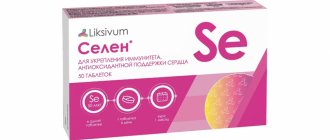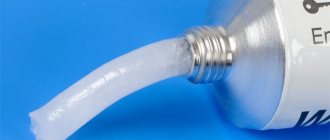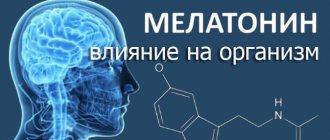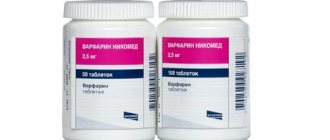What is selenium?
Selenium is an essential mineral that supports the function of the endocrine, immune and reproductive systems. It is known for its antioxidant properties and, together with vitamin E, protects the body from free radicals and also promotes normal cell growth.
Selenium is one of the "essential" micronutrients, meaning that our bodies cannot produce it on their own, so we must get it from our diet.
The amount of selenium in foods depends on the concentration of the soil and water in which it was found. People can also consume it as supplements.
Selenium prevalence in the environment
In the environment, selenium is found in the elemental state, as well as in the forms of selenides, selenites and selenates, which differ slightly in chemical structure from each other. It is noteworthy that the transition of this microelement to neighboring states is quite easy and occurs under the influence of the pH of digestive juices, humidity, redox potential and depending on the concentration of free oxygen.
Circulating in nature, this element initiates rock weathering processes. It is released into the atmosphere with volcanic gases, and its biomethylation by microorganisms also plays a certain role in this.
Plus, it is also necessary to take into account that it can enter the human body not only through nutrition, but also through aerogenous means - that is, by inhalation.
Signs of deficiency and excess of selenium in the body
Overdosing from natural sources is extremely rare, but overdosing on highly concentrated supplements can have negative effects. How is selenium harmful and what problems may arise?
- metallic taste in the mouth and unpleasant odor
- brittle nails
- stains on teeth or tooth decay
- gastrointestinal problems, as well as nausea
- neurological disorders
- fatigue and irritability
- rash
- hair loss
Selenium deficiency leads to impaired absorption of vitamin E by the body, and can also cause a number of symptoms and diseases.
How do you know if your body lacks selenium? Signs may be as follows:
- muscle weakness
- fatigue
- hair loss
- weakened immune system
- infertility in men and women
The amount of selenium in foods is largely determined by the quality of the soil used to grow them. Precipitation, evaporation and pH levels affect selenium concentrations in the soil.
A 2021 study from the Proceedings of the National Academy of Sciences estimates that insufficient selenium intake affects up to 1 billion people worldwide.
Selenium and the thyroid gland
The thyroid gland contains the largest amount of selenium per 1 gram of tissue compared to other organs and systems of the body.
For the synthesis of thyroid hormones, processes of iodination of tyrosine amino acid residues in the thyroglobulin molecule are necessary - this occurs on the apical membrane (or near it) under the action of the enzyme thyroid peroxidase - and the presence of hydrogen peroxide (H2O2) is a prerequisite.
The formation of H2O2 is potentially dangerous for thyrocytes (thyroid cells) and is believed to be regulated by TSH (thyroid-stimulating hormone) through intracellular messengers that trigger complex cascade processes.
We recommend
“Microelements in the body: consumption standards and methods of replenishing the deficiency” Read more
In the absence of TSH, the secretion of glutathione peroxidase (namely type 3) at the apical pole of the thyrocyte leads to a decrease in the concentration of peroxide through its decomposition to water molecules. On the contrary, in the presence of thyrotropin, the formation of this antioxidant enzyme decreases and, as a result, the amount of H2O2 available to thyroid peroxidase increases and iodination reactions occur.
With a lack of selenium and iodine in the diet, another very important microelement, a fairly common endemic disease develops - myxedematous cretinism. It is accompanied by thyroid atrophy and leads to mental retardation.
Iodine
- a necessary substrate for the synthesis of thyroid hormones. Accordingly, with a decrease in its concentration in the body, a decrease in the synthesis of thyroxine and triiodothyronine is observed. This, through a negative feedback mechanism, leads to increased secretion of TSH by the pituitary gland, which, as previously mentioned, increases the formation of hydrogen peroxide. The observed selenium deficiency affects a decrease in the activity of glutathione peroxidase.
Impaired neutralization of peroxide causes cell destruction and fibrosis - the latter occurs due to the active release of transforming growth factor beta by macrophages, which blocks the division of epithelial cells and stimulates the proliferation of connective tissue fibroblasts. All these mechanisms, the authors believe, are triggered immediately after birth and lead to the rapid destruction of thyroid tissue.
At the same time, against the background of developing hypothyroidism, the activity of type 2 deiodinase in the brain increases to maintain a locally normal concentration of triiodothyronine, necessary for neurological and mental development.
Thus, we draw your attention to the fact that replenishing selenium reserves without first eliminating iodine deficiency only worsens symptoms.
In addition, it should also be noted that the deiodinase of the thyroid gland contains selenocysteine (that is, in the structure of the amino acid cysteine, sulfur is replaced by selenium) - and in many people this transformation is impaired, which entails insufficiency of the function of the organ itself.
New research also emphasizes the need for selenium supplementation in autoimmune thyroid diseases: for example, patients with Hashimoto's disease and pregnant women with antibodies to thyroid peroxidase (TPO) showed a decrease in the level of specific immunoglobulins and an overall improvement in the ultrasound structure of the organ. Moreover, the risk of postpartum thyroiditis was significantly reduced.
Research
: Selenium and the thyroid gland: more good news for clinicians, Selenium - impressive results and prospects for use
The benefits of selenium for women
Selenium, which is consumed in the form of tablets/capsules rather than regular food, is a dietary supplement. Like any nutritional supplement, it has a number of contradictions. This is primarily due to the fact that dietary supplements are not sufficiently controlled by Ukrainian legislation and, before reaching the shelves of pharmacies and stores, they undergo only a formal test to ensure that they do not contain heavy harmful substances. At the same time, the sanitary-epidemiological examination in Ukraine was canceled and is no longer used. Before taking any vitamin supplements, consult your doctor.
So what is selenium for? Many scientists agree that this mineral has many undeniable benefits and affects vital functions:
Antioxidant
Selenium is a powerful antioxidant that helps reduce oxidative stress by controlling free radicals. What does this do to the body? Protects the immune system, increases the body's resistance to viruses and bacteria, and promotes recovery and increased physical performance.
Thyroid
The thyroid gland contains more selenium than any other tissue in the human body, which is why it is necessary for its full functioning. Selenium is a catalyst for the conversion of the hormone thyroxine. It, in turn, affects metabolism, physical and mental activity and prevents fat deposition. Research shows that taking up to 200 mcg of selenium per day, along with thyroid hormones, can reduce the number of antibodies in the body, improve mood, and overall well-being for people with underlying health conditions.
Reproductive system
Selenium affects reproductive function, reduces the likelihood of miscarriage, and also protects the embryo from problems with the development of the spine.
Cognitive functions
Study in the European Journal of Nutrition
showed that eating one selenium-rich Brazil nut per day improved verbal fluency and other mental functions in patients with mild cognitive impairment. There are also studies published in the Archives of neurology regarding the Mediterranean diet, which is rich in foods high in selenium, claiming that their consumption reduces the risk of developing Alzheimer's disease.
Selenium for COVID-19
According to a study published in the scientific journal Current Nutrition Reports, oxidative stress is a characteristic feature of COVID-19 disease. It is associated with an immunopathological disorder observed in people with severe COVID-19. Selenium plays a key role in strengthening the immune system, reducing oxidative stress and preventing viral infections.
Selenium supplements in appropriate dosage may act as maintenance therapy for COVID-19.
Controversies:
- Every site says that selenium helps keep the heart healthy by controlling oxidative stress and reducing the risk of heart disease. In 2021, the Journal of Trace Elements in Medicine and Biology analyzed 16 studies that examined the effects of selenium supplements on coronary heart disease. In total, almost 44 thousand people took part in them. The scientists concluded that taking selenium supplements reduced levels of the marker C-reactive protein and increased levels of antioxidants in the body, with little effect on cardiovascular health. However, they insisted that selenium supplementation alone is not sufficient to reduce mortality and improve lipid profiles.
- Manufacturers claim that selenium helps protect the body from certain forms of cancer. The FDA, which administers the US Food and Drug Administration, has reviewed a variety of scientific data and studies on this subject and has concluded that there is too little reliable evidence regarding the effect of selenium on the treatment and prevention of bladder, prostate and thyroid cancer. glands.
- It is often reported that selenium may benefit people with asthma due to its ability to reduce levels of oxidative stress and inflammation in the body, but medical opinions in The Cochrane database of systematic reviews differ on this point.
- Taking yeast fortified with selenium, alone or together with vitamin E, does not improve eczema (atopic dermatitis).
- There is also no clear answer regarding improving athletic performance.
Selenium intake standards
As mentioned above, a person does not need much selenium to maintain his health:
- for small children under 3 years old, 20 mcg/day is sufficient;
- up to 8 years - 30 mcg/day;
- up to 14 years - 40 mcg/day;
- children over 14 and adults - 55 mcg/day.
Selenium deficiency can occur in patients with impaired bowel function, as well as in people who eat food grown in selenium-deficient soil. An increased need occurs during pregnancy and breastfeeding - during these periods, women need 60 and 70 mcg/day, respectively. During times of stress or regular physical activity, it is also recommended to increase the selenium dose to at least 70 mcg per day. An even higher dosage is necessary for people with certain diseases: malignant tumors, Alzheimer's, Parkinson's, sclerosis, diseases that impair the functioning of the thyroid gland, and cardiovascular diseases. However, in any of these cases, the daily dosage of selenium should be prescribed by a doctor.
Important! An adult should not exceed a dosage of 400 micrograms per day, including selenium obtained from dietary supplements and food.
The mineral, taken in doses prescribed by a doctor, does not cause side effects. But a significant overdose can cause bad breath, fever, nausea, and in some cases, liver, kidney, and heart problems.
What foods contain selenium?
Selenium, like any other mineral or vitamin, is best obtained from food.
Products that provide selenium into the body are quite diverse. Among them:
- Brazil nuts. Literally 6-8 nuts contain about 540 mcg of selenium. But this indicator is quite arbitrary, since one study in the scientific journal Chemosphere showed that the concentration of the mineral varies widely depending on the region in which they grew. In general, it is enough to consume them only 1-2 times a week to saturate the body with enough selenium.
- Fish and seafood. Total 48 gr. sardines contain 46% of the daily value of selenium, 85 g. tuna – 167%, 160 gr. halibut – 171%, 85 gr. oysters – 238%. Shrimp, salmon and crab contain 40 to 65 mcg.
- Meat and poultry. Less than 100 gr. ham contains 42 mcg of selenium, pork and beef - about 33 mcg, chicken - from 22 to 25 mcg, turkey - 31 mcg.
- Dairy products. One cup of cottage cheese contains about 20 mcg of selenium; the same container of milk and yogurt will provide the body with 8 mcg.
- Eggs. Two large eggs provide 56% of the daily value of the mineral.
- Brown rice One cup of cooked long-grain brown rice provides 19 mcg of selenium, or 27% of the recommended daily value.
- Mushrooms. Total 100 gr. mushrooms contain about 12 mcg.
- Chia seeds. In 100 gr. The product contains 53 micrograms of selenium.
- White bread. One slice contains 10 mcg.
- Seeds. They are rich in vitamins and minerals, including selenium. One handful contains 27% of the daily value. In addition, sunflower seeds are an excellent source of dietary fiber and vegetable protein.
Do not forget that during heat treatment the content of this microelement in seafood decreases. The greatest benefit will come, for example, from freshly caught tuna tartare. Be sure to keep raw fish and seafood fresh.
What other foods contain selenium? It can also be found in wheat bran, wheat and corn.
Essential toxin
In the human body, selenium interacts with vitamins, enzymes and biological membranes, participates in the regulation of metabolism and is a component of more than 30 vital compounds, is included in the active centers of many enzymes and has antioxidant properties. The required daily dose of selenium for humans is 50–100 micrograms per day. However, if this dose is exceeded by just a few times, serious poisoning can occur. How to maintain selenium balance in the body with such a narrow range between harmless and toxic concentrations? And why is it so important for human well-being? These and other questions N + 1
answered Anatoly Skalny, professor, head and founder of the Department of Medical Elementology of RUDN University.
N+1
: What is selenium responsible for in the human body? How important is this element?
Anatoly Skalny:
For a long time, selenium was considered an extremely toxic element. Only in the second half of the 20th century were its functions discovered, which, on the contrary, were associated with detoxification and activation of the body’s antioxidant systems; functions that suppress inflammation and prevent the formation of various neoplasms.
Selenium has a great influence on the nutrition, development and functioning of muscle and connective tissue. It is very important to remember that selenium is one of the key elements that affects the body's absorption of iodine. It affects the enzyme deiodinase 2, which promotes the activation of thyroid hormones in tissues.
For humans, selenium is an essential, that is, vital element. If you sharply reduce or completely block its entry into the body, the person will get sick and may even die.
What exactly are the consequences of selenium deficiency in the human body? How does this deficiency manifest itself in a small child, teenager, or adult?
In children, due to selenium deficiency, the lungs work worse, and the function of the thyroid gland also worsens. There is a hypothesis that selenium deficiency is associated with sudden infant death syndrome (SIDS).
In SIDS victims suffering from selenium deficiency, according to some studies, changes in the structure of cardiac muscle mitochondria were observed, which led to a decrease in the synthesis of ubiquinone and, as a result, caused abnormalities in the electron transport chain, cardiomyopathies and degenerative diseases of the heart muscles. Selenium is able to protect cells from oxidative stress and appears to preserve the ability of cells to synthesize ubiquinone.
According to our observations, almost all premature babies born with low weight, less than 2 kilograms, had a selenium deficiency. It is interesting that selenium deficiency was not detected in the parents, that is, the level of this element in the newborn’s body is also affected by the duration of intrauterine gestation.
In adolescents, selenium deficiency is most dangerous because it can reduce normal thyroid function. This contributes to a more frequent occurrence of skin diseases and diseases of the heart muscle.
In adults, selenium deficiency also faces many complications. Selenium is an anti-aging element. Accordingly, with a selenium deficiency, life expectancy is usually lower.
In adults, the incidence of myocardial infarction, strokes and cancers, such as prostate, uterine, breast, liver, skin and colon - many types of cancer are associated with selenium deficiency - increases.
People who abuse alcohol, as well as those who have suffered hepatitis of various etiologies, have a selenium deficiency.
Ethanol is a source and activator of the formation of free radicals. Severe alcohol intoxication leads to more intense formation of reactive oxygen species (ROS) in mitochondria.
Elevated levels of ROS lead to mitochondrial damage, which exacerbates the development of oxidative stress, the process of cell damage due to oxidation. For the correct functioning of most antioxidant enzymes, selenium is required, that is, its consumption increases sharply.
Residents of which countries are most susceptible to pathologies associated with selenium deficiency? How common are such diseases in Russia?
The diseases described above are endemic, that is, they are common in areas where there is a selenium deficiency. Of the billion people suffering from some degree of selenium deficiency, the majority—an estimated nearly half—live in China.
Selenium deficiency most often occurs in the northeastern regions of the country bordering Russia, as well as in Central China.
This is a huge problem for China, because 30-40 years ago, Keshan disease was widespread there, in which mostly young men died from cardiomyopathy at an early age. The disease is characterized by cardiogenic shock, abnormal cardiac enlargement, heart failure, cardiac arrhythmia, and ECG changes.
Currently, this phenomenon has been well studied, and thanks to many preventive procedures to reduce selenium deficiency, the number of deaths due to Keshan disease has been minimized. Nevertheless, the situation continues to worry the Chinese authorities.
When the Venetian Marco Polo traveled to the Chinese province of Suzhou in 1265, he learned from the locals about poisonous plants that grew there in the mountainous areas. If pack horses or mules ate this grass, they would become sick and their “hooves would fall off.”
This is how Europeans probably first became acquainted with selenium - plants were dangerous precisely because they grew on soil saturated with this substance. Chemists learned about the existence of selenium only at the beginning of the 19th century.
In the 20th century, scientists began to understand that this element plays a significant role in the lives of animals and people. In the 1930s, the accumulation of selenium in plants began to be considered the cause of “alkali disease” in livestock, the same disease that Marco Polo described in the 13th century.
Share
In Russia, the region of selenium deficiency is the Trans-Baikal Territory, where there are territories bordering China. However, the population of Transbaikalia, compared to China, is small. Another large region with a selenium deficiency is the North-West of Russia. We see a high incidence of selenium deficiency from Taldom and further north.
In the Orenburg region, we analyzed the soil using atomic absorption spectrophotometry. We also examined selenium levels there in staple foods and human hair samples using inductively coupled plasma mass spectrometry.
Selenium deficiency appears to be quite common in this region, with both selenium and iodine deficiencies.
Thanks to our efforts, the Institute of Bioelementology and the Federal Center for Biological Systems and Agricultural Technologies were founded in the Orenburg region. They are actively working to correct the imbalance by adding selenium and selenium-containing compounds to food, animal feed and the environment.
There are also areas with excess selenium content. They are also among the sparsely populated ones - in Yakutia, in the Middle Urals. However, there are much fewer regions with an excess of selenium than regions with a deficiency.
Selenotoxicosis is no less dangerous than selenium deficiency. Excess selenium is often characterized by hair loss, peeling nails and gastrointestinal upset.
In China, the excess of selenium is greatest in Hubei Province, Enshi County, where about four million people live. There are organizations in the area that grow foods rich in selenium to supply areas of the country that are otherwise deficient.
Selenium deficiency is also widespread in Central and Western Europe. In Germany and Finland, for example, there are government programs dedicated to the study and correction of deficiency of this element.
Selenium deficiency is rare in the United States, as is the case in India. True, there are regions in India with an excess of selenium, in particular in the state of Punjab, where we conducted joint research with Indian scientists.
How can you compensate for the lack of selenium in the body?
Through foods fortified with selenium or naturally rich in selenium. Foods that naturally accumulate selenium are nuts. The champion in selenium content is the Brazil nut (68–91 micrograms in one nut), 1-2 nuts per day replenish the daily requirement of selenium (50-100 micrograms per day).
Other products that are simpler and more understandable to us are garlic, brown bread, and wheat bread from regions with excess selenium content.
By the way, we were measuring the level of selenium in wheat grown on soils enriched with this element, together with our Indian colleagues, in particular Professor Prakash, who works at one of the universities in the state of Punjab, where there are soils rich in selenium.
In what form is selenium best absorbed by the body?
In products of animal and plant origin, selenium is found in organic substances, mainly amino acids, namely selenocysteine (Se-Cys) in animal products and selenomethionine (Se-Met) in plant products.
Selenium can also enter the body in the form of inorganic salts: selenite or sodium selenate, for example. In principle, from the point of view of selenium absorption by the body, there is no big difference whether it comes in organic or inorganic compounds.
More than 80 percent of selenium from food or water is absorbed. Although it is believed that selenium is safer in its organic form, in fact it is well absorbed from other sources - medications, vitamins, dietary supplements, and so on.
But it is worth remembering that there are cases of selenotoxicosis. My recommendation is very simple - do not take medications containing selenium for more than 3 months if you do not control its content in the body. And you can control it by analyzing the selenium content in blood serum, hair, and nails.
How did you measure selenium levels in conventional wheat and wheat grown in soils with excess selenium?
We sampled wheat grains from an area enriched with selenium (Punjab, India; soil selenium content 6.5 ± 0.3 micrograms per kilogram) and an area with normal selenium levels (Patiala, India; 1.08 ± 0.23 microgram per kilogram). Next, we made tortillas from whole wheat flour.
The samples were processed by microwave decomposition in nitric acid at a temperature of 170-180 degrees Celsius for 20 minutes. The selenium content was determined by inductively coupled plasma mass spectrometry.
The level of selenium in wheat from selenium-enriched areas was almost 500 times higher than that of wheat from areas with normal selenium levels. There was 179 times more selenium in bread.
My students, Doctors of Science Elena Salnikova and Tatyana Burtseva from the Orenburg region, also studied this process. Selenium is well preserved in bread, but losses are inevitable during any processing of wheat, so the concentration of selenium in such products is somewhat lower than in the original material.
Did the levels of other trace elements change in any way in wheat and bread from areas with different selenium levels in the soil?
If wheat is high in selenium, then in the absence of a source of heavy heavy metal contamination, the amount of these metals in wheat will be relatively lower. Selenium can bind heavy metals, and in this form they are excreted from the plant.
It should be clarified that with an increased selenium content in the soil, this selenium does not always pass directly into the plant. This may be due to soil contamination with heavy metals and sulfur compounds.
In the same Orenburg, in the vicinity of a gas processing plant, where large emissions of sulfur-containing compounds occur, the transition of selenium into plants occurs worse than in areas where sulfur emissions are much lower.
Consuming bread with high selenium content may help people suffering from selenium deficiency. Will such bread be harmful for people with normal levels of selenium in the body? Most likely no.
To overeat selenium, you need to eat this bread in incredible quantities, but since there is now a trend towards reducing the consumption of baked goods, there cannot be much risk. It is unlikely that any of us eats two kilograms of bread per day, and only under this condition is it possible for excess accumulation of selenium in the body.
How does growing on soils enriched with selenium affect the level of this element in other cultivated plants? For example, in rice or corn?
The level of selenium in them increases, of course. It is believed that wheat in our latitudes is a good accumulator of selenium, but in the same Enshi county in China, corn and rice enriched with selenium grow.
Is it possible to compensate for selenium deficiency by introducing into the diet not only selenium-enriched wheat, but also, for example, rice, corn, and mustard?
Of course, many products are possible. For us, garlic, for example, is more relevant. It contains a lot of selenium. Coconut also contains a lot of selenium. Of the plants used in folk medicine, celandine is characterized by a high level of selenium. Mustard also accumulates it well.
Are there any products fortified with selenium on sale today? Are they marked in any special way?
As part of a team of scientists, I helped draw up a program for the province of Hubei, where the soil is very rich in selenium, to develop the export of selenium-rich products. More than 200 enterprises in the province are working on their production.
Products grown on this soil are labeled. Corn, rice, mushrooms, tea, and potatoes are labeled with selenium content, and with this label they are supplied to regions with selenium deficiency.
In the Chinese province of Shandong there is an agricultural experimental station named after Professor Skalny, which was opened on the basis of my idea about the production of selenium-enriched products on the principle of hydroponics. There, this principle was used to grow strawberries enriched with selenium.
In Enshi, there is an entire production facility where sodium selenide and inorganic selenium are added to products to standardize the amount of selenium using hydroponics.
In the Orenburg region there are programs that produce local products rich in selenium. We are talking, for example, about mayonnaise and eggs. To achieve this, chickens consume feed enriched with selenium.
Professor Alexander Tambiev, Natalia Kirikova and Vladimir Mazo and I have a joint patent for the enrichment of spirulina with selenium. Spirulina is a food and feed additive for humans and animals, made from cyanobacteria of the genus Arthrospira
and is a rich source of vitamins, macro- and microelements, antioxidants.
Spirulina, under certain physical influences, accumulates a lot of selenium. You only need a little of it - 1-2 grams of spirulina, enriched with selenium, replenishes half the daily requirement. This is one of the biotechnological techniques that can effectively compensate for selenium deficiency.
We are now creating a line of products enriched with individual microelements. These products are produced, for example, in the form of bars, candies and other things that children love. But in general, we produce a wide range of products - sweets, sausages, gluten-free products and the like.
We are currently discussing a project to include fortified foods in school meals, but taking into account the characteristics of the region. Depending on the region, we propose to release local products so that they compensate for the deficiency of various microelements through the most natural way - food. The release of some products will begin in the spring.
Interviewed by Chiara Makievskaya
Calculation of daily dose
For a long time, selenium was considered toxic. Indeed, poisoning with it led to anemia, hair loss, and blindness - these symptoms were observed in areas where the content of this mineral in the soil exceeded 1000 times its average concentration. Moreover, it is an antagonist of sulfur and is capable of replacing it in amino acids (cysteine and methionine), which can lead to disruption of enzyme function.
The optimal daily dose for the normal course of biochemical and physiological processes is 55 mcg for adults (according to WHO recommendations).
The US Food and Nutrition Board notes that the amount of selenium consumed should vary depending on age and range from 40-70 mcg for men, 45-55 mcg for women and 25 mcg for children.
It is noted that the total amount of this mineral in the human body varies from 3 to 20 mg, with about 47% of the total amount found in skeletal muscles, while the kidneys account for only 4%.
Serum selenium levels gradually decrease in individuals over 60 years of age.
At serum concentrations below 85 mcg/L, a deficiency occurs and is associated with a 4- to 5-fold increased risk of prostate cancer.
Contraindications and side effects of selenium
With a selenium deficiency, the human body is not able to fully function, so its replenishment along with foods is completely justified. However, taking the mineral in preparations is contraindicated in a number of cases:
- pregnancy and breastfeeding are contraindications for long courses of selenium and its large dosages,
- hemodialysis,
- male infertility,
- surgical intervention,
- autoimmune diseases,
Side effects during the use of the drug appear extremely rarely, however, in individual cases or when recommended dosages are exceeded, there may be cases of nausea, constipation, mood changes, and brittle nails.
Sources of selenium
Sources of the mineral are food (90%) and water (10%). Plant foods include:
- whole wheat bread;
- White mushrooms;
- seaweed;
- spinach;
- olives;
- oat and buckwheat cereals;
- pistachios, cashews, peanuts;
- flax seeds, sunflower seeds, pumpkin seeds;
- beans, lentils, peas, chickpeas.
From meat and fish:
- lamb, pork, goose, chicken, duck liver;
- chicken breast;
- turkey;
- herring;
- tuna;
- mackerel;
- pink salmon.
It is also found in eggs and dairy products.
To avoid mineral deficiency, it is enough to eat properly and balanced.
The need for additional saturation of the body with supplements arose when nutritious food began to be replaced by fast food and unhealthy snacks. To correct the situation, you need to adjust your diet and add selenium-containing foods to it. You just need to cook them correctly: you can steam them, stew them, or bake them in the oven. However, it is best to eat them fresh. For example, you should add seaweed or spinach and tuna salad to the main dish.
What if it's not enough?
A lack of selenium leads to a decrease in the body's defense against free radicals. This causes the development of rheumatoid arthritis and cardiovascular diseases.
Selenium deficiency impairs the functioning of the thyroid gland, which leads to a slower metabolism and increased body weight. Selenium deficiency is often one of the causes of infertility in men caused by low sperm quality. Selenium deficiency occurs with excessive consumption of carbohydrates. Fast carbohydrates found in refined foods, desserts and sweet soda can destroy selenium. In addition, vegetarians who consume foods made with dehulled grains may experience serious selenium deficiency. The absorption of selenium deteriorates with gastrointestinal diseases and constant consumption of laxatives and dietary supplements to “cleanse the body.” In addition, those who are fond of canned food and concentrates do not receive enough selenium - in them this element is destroyed during long-term processing.
The most important
Selenium is a powerful antioxidant that stimulates the thyroid gland, improves immunity and human reproductive functions.
In large doses, selenium is toxic, but the amount of this microelement necessary for health can be obtained from seafood, meat, unrefined grains and even mushrooms. Illustration: Muy Yum Tags:
- Antioxidants
- Pregnancy
- Avitaminosis
- Meat
- Thyroid
- Seafood
- Immunity
- Reproductive system
- Dictionary
To leave a comment you must be an authorized user
How many do you need?
The daily requirement of an adult for selenium is approximately
50 mcg. Children under one year old need significantly less of this substance - about 20 mcg.
But, since selenium is toxic in large doses
, experts do not recommend consuming more than 400 mcg per day.
The upper limit for infants is 45 mcg per day. This mainly applies to those who receive selenium in the form of vitamin and mineral preparations or dietary supplements. Along with food, an overdose of selenium can only be obtained in those areas where the soil is oversaturated with it. Russia is one of the regions experiencing selenium deficiency.








